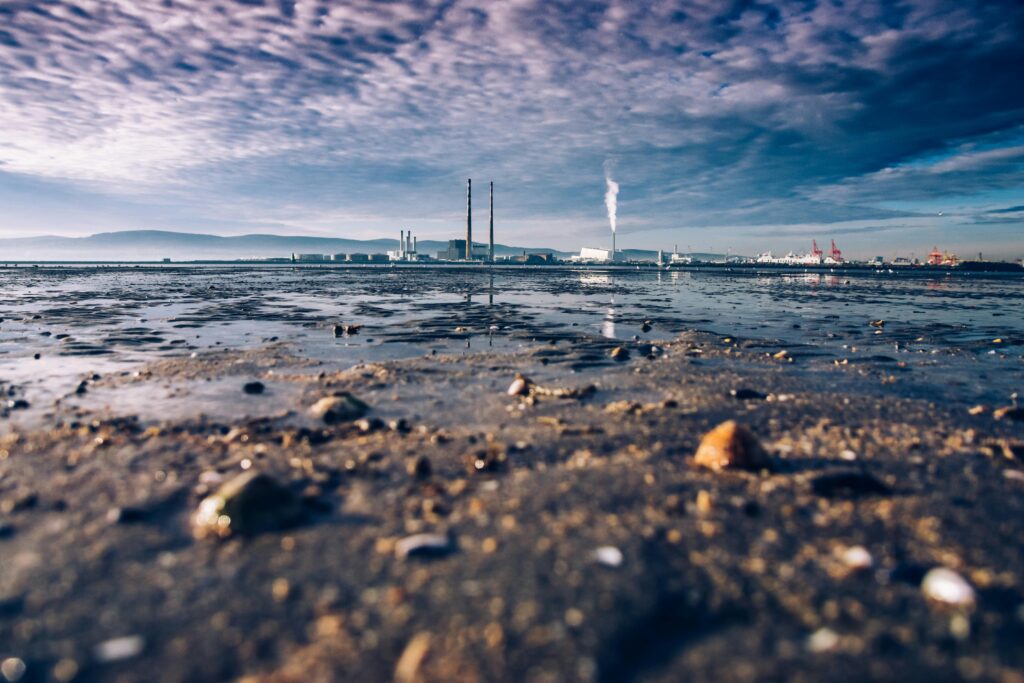Published on 1st February 2025
Authored By: Mimansa Pandey
Indian Law Society
ABSTRACT
In the article that you are going to read I will take you on the journey of how the human race reached to the extent where there was a need to make laws on this resource which we refer as water. Water which is supposedly a renewable resource but only if you use it properly with precautions and knowing that it is difficult to renew it. We will start with the first law made and then how more problems arise and a whole tribunal was established to solve this issue. Let us dive into the main agendas and explore the legality of water pollution laws.
INTRODUCION
Water is a very vital resource for human beings. From our childhood we have learnt that water is important we should not waste it. We should use it precisely and keep in mind that it will get depleted. We every single time wrote an essay or article on save water. Then why still after so many education and knowledge on this topic people were careless that the government needed to step in and make it an authoritative agenda for themselves. For that we need to know about the first major law in India on water was the Water (Prevention and Control of Pollution) Act, which was enacted in 1974.
Water (Prevention and Control of Pollution) Act, 1974:
Prior to 1974 there were no laws on water bodies in India. The government noticed that the water bodies were very much contaminated and there was a need to bring some rules and regulations which can act as a limit to this. Then this act was enacted in 1974 to control the pollution in the water and prevent it from getting contaminated. To have the same amount of decency in using of water in our country. This act contains both surface water body or underground level water body. It also has the objective of forming two boards for water namely Central Pollution Control Board and state Pollution Control Board. It has 8 Chapters and 64 sections. There are several objectives of this act.
It defines the term related to water bodies. It does maintenance and restoration of quality of all types of surface water and underground water. The central Pollution Control Board which is establishes in Delhi and the State Pollution Control Board that is usually established in the capital city of the state. It mention the functions, the powers or what is the role that is assigned to the boards. It prohibits the disposal of any kind of polluted matters to the flowing stream. It also includes punishments if the rules are not abide by the subjects. The punishments can be of fines or of jail. But in 1988 this act was amended to bring some changes according to the modernization that was going on. Now the industrial part was also covered under this. The amendment empowered the State Pollution Control Board to establish and enforce effluent standards for factories that discharge pollutants into waterbodies. It now had the power to accept reject and impose conditions while granting permission to the industry. They can now ask the industry to show the plans of waste management and accept and reject it accordingly. They can even test the equipment’s and ask them to give a sample for sample analysis test. Before 1988 the State Pollution Control Board And Central Pollution Control Board if found the industry that it is discharging ample amount of waste in the water bodies. In that situation they were supposed to Transfer that case to the criminal prosecution initiated by the boards. But now after the amendment they can simple ask the industry to close and give orders of closing that factory there is no need to visit the court for criminal prosecution now. One more amendment was endured by this act in 2024. It included many things as decriminalizing of various offences and replacing them with fines except for some section like mandatory consent and discharge of sewage. The offenders will now pay the penalty and fine instead of facing the prosecution.
SHORTCOMINGS
The The Water (Prevention and Control of Pollution) Act, 1974 has some loopholes and limitations. Though it works properly but like everything even this act has it’s own pros and cons. The pros that this act is still weaking and getting amended at times when needed is a pros in itself as it could have been just eliminated if it was not working so properly. The cons are that it tells us that there should be prevention and control of pollution but why to even pollute water water at first place as by controlling it is understood that it can be polluted to some extent. The fines and punishments mentioned in the act are not applicable to all the offences. Then the practice of corruption which is in almost every government body also exists and big industrialists use their monetary power to get benefits. One more limitation in this act is that the the act is silent on groundwater. It also does not mention about the tapping of the groundwater and the rain water harvesting. Still there are a lot of things that are to be improved in this act by the government and amended eventually. Let us have a look on some cases of water disputes which brought act on water.
ODISHA RIVER POLLUTION ACT
The disposal of contaminants which is not proper in most parts of India is a prominent issue that has been seen. Whether it s a factory or a industry or a garbage dump the waste management system in India is not at all proper. The toxic and poisonous substance that these wastes has is one of the leading cause of water pollution in India. This act was established keeping a view in mind that was to regulate and manage the disposal and waste or effluents of factories in water bodies and enable the maintenance of water bodies and streams. As with growing modernization and urbanisation the sewage system in Odisha emerged as a major water bodies which was very much polluted. That is in the year 1953 The Orissa River Pollution Prevention Act, 1953 was enacted. They have even established a board to govern the provision and rules of the act. Mahanadi and Bramhani are the rivers in Odisha which are contaminated upto 50%. It is very difficult for the human population there to survive as the major one reside near the river and have their daily basis work related to water bodies. The waste of sewage that comes from factories contains waste from mines, disposal of heavy metals like lead magnesium etc. They are dangerous for human body and need to be treated by waste management. Hence this act in very important and necessary.
THE DAMODAR VALLEY CORPORATION ACT, 1948
The damodar river valley is one of the most flourishing river flowing in the Indian state of Jharkhand and West Bengal. It is rich in resources and minerals and it is famous for mining and industry related activities. But during the monsoons almost eighty percent of the river was polluted because of the wastes that was disposed by the mines and factories. That was the reason this corporation was made. This act gave the power to the board of making rules and regulation to prohibit the pollution and recover water rates and electricity charges. This helped a lot to improve the situation of the river.
THE RIVER BOARDS ACT 1956
The act of river boards was established for the regulation and development of the river and river valleys which crosses the state lines or are inter–state. For solving any kind of dispute if happened between or among the states for the water bodies. The main concern of this act was to respect the interest and wishes of the people. This act gives the state a power in which it can establish a board when needed to resolve the conflicts by issuing a special notice. It has various functions like it can acquire the land which is on the river bank for water quality monitoring situations. It can even conduct a survey to test the effluents in the water bodies. They can inspect the water dams and keep a watch on the amount of water sharing from the dam. They can gather data related to the river and valleys and collect the water to test if there are any chances of flood. They are even responsible to produce an annual report on the health of the rivers. They can plan and execute the projects for development of the river valleys. Overall this act is powerful and has a lot in his authority and power. It is helpful as well as important because it resolves conflicts.
THE SHORE NUISANCES ACT (BOMBAY AND KOLABA) ACT, 1953
The act of The Shore Nuisance Bombay and Kolaba Act was enacted for the safe navigation of the ships of the harbour and the regulation of the waste materials in the coastal area. In simple words it was made to prevent the nuisance caused by the people on the shore. This law gave the powers to collector. It was related to elimination of the nuisance any kind of obstruction or the encroachments. It even had the power to remove the nuisance himself if the owner is not obeying the order and sell the materials of encroachments. This law had penalty for the people or the organizers who do not follow the rules. If the collector is removing or doing anything which the owner does not wish he can simply apply to the supreme court for an order of stop. Then the owner has to present a petition within a month until and unless there is any special circumstances. Later on this Shore Nuisance Bombay and Kolaba Act of 1953 was included in the Water (Prevention and Control of Pollution) Act of 1974.
THE NATIONAL WATER POLICY 2008
This act was established in response to the climatic change going on in the environment. It is also called NWM. It has various objectives like conservation of water and reduction in waste in water bodies and then the equal distribution of water. It also promotes the water conservation methods and the improvements in the efficiency of using the water. It monitors the quality of under ground water regularly. It ensure that the flow of the perennial streams is minimum. It prioritizes the need of the drought prone areas in the process of water resource development planning. It keeps a check on the erosion of the land that is done by the rivers and try to keep it minimum or prevent it as much as possible.
APPLICATION OF LAWS
The question that arises now is that are these laws really working up to the mark or they are just on paper. According to the data it shows that the water pollution level is still high but it is not because the government did not take any step. A big thanks to the government for taking the steps as the situation could have been much more worse then today. The data shows that the water bodies in India are polluted and still people die because of the contaminated water that they drink. But imagine the situation if there were no acts and no precaution for controlling this was taken by the authority. Still there is a room for development in this arena but so far whatever has been done is great deal of work.
CONCLUSION
In the conclusion I can add that the acts and laws made on water in India is a lot and they have different rules and regulations or the principles adopted by them depending upon the level of modernization over the decades. One thing that was similar in almost on laws was the control on pollution. The laws on ground water is essential and there isa need for one single body which looks over the issue of water. India has made a lot of progress over the years and with this pace it will surely accomplish the aim of clean water.
REFERENCES
- THE RIVER BOARDS ACT, 1956, India code,[16:45]
https://www.indiacode.nic.in/bitstream/123456789/1659/1/195649.pdf
- THE DAMODAR VALLEY CORPORATION ACT, 1948, India code, [17:33]
https://www.indiacode.nic.in/bitstream/123456789/1807/1/194814.pdf
- Shantanu Pandey, Laws existing in India related to prevent and control water pollution, Ipleaders, [September 15th 19:25]
https://blog.ipleaders.in/laws-existing-india-prevent-control-water-pollution/




